Nothing makes quite a statement like an outdoor plant with huge leaves. Besides drawing attention and being the centerpiece of your backyard, such plants add beauty.
They also make a space appear occupied by filling empty spots and providing shades when it’s too sunny.
However, the sheer size of large-leaved plants means you must choose wisely unless you want to end up with something that sticks out like a sore thumb.
So here are some options to brighten your dull backyard with their big leaves.
1. Angel’s Trumpet
Angel’s trumpet can instantly transform your backyard into a tropical jungle.
The plant, also called Brugmansia, has beautiful foliage, stunning blooms, and a pleasant scent.
The flowers look like trumpets, hence the plant’s name.
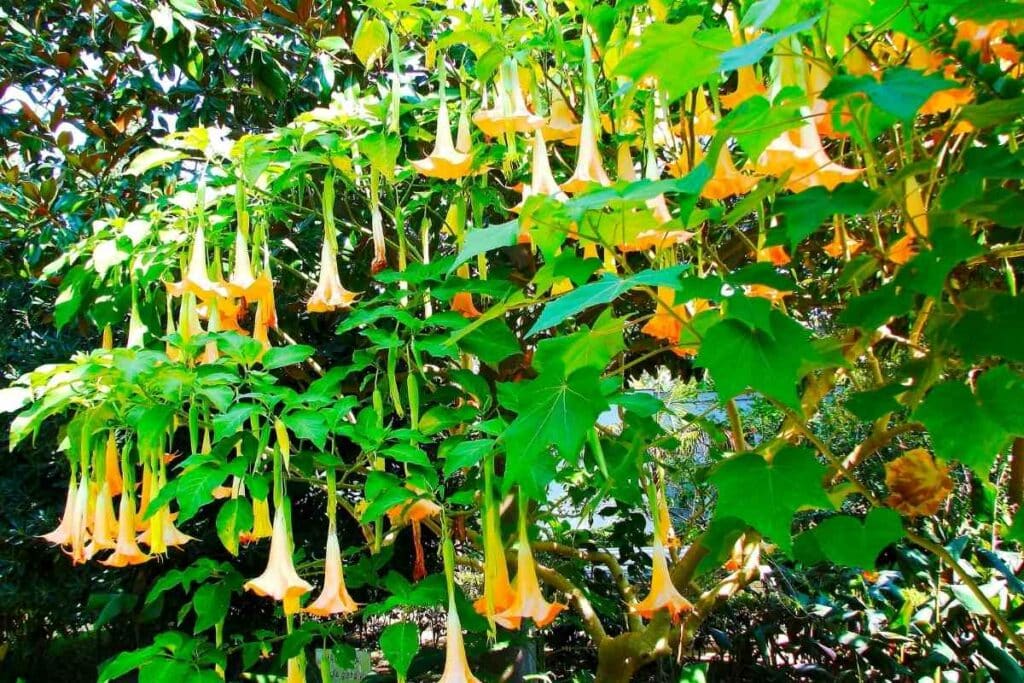
Brugmansia thrives in warm and most containers, away from direct sunlight.
During summer, it’s advisable to water the plant frequently to prevent withering.
It helps move the plants indoors to protect against the cold in winter.
Angel’s trumpet draws attention and can be an excellent focal point in your yard.
Heads Up! Ensure that you place them strategically, especially when they bloom in summer through autumn.
2. Japanese Banana
Banana plants are famous for their gigantic leaves, and the Japanese Banana isn’t any different.
Adding these plants to your yard changes it into a green paradise.
Besides its enormous green leaves, this plant also rewards you with an occasional treat of sweet bananas.
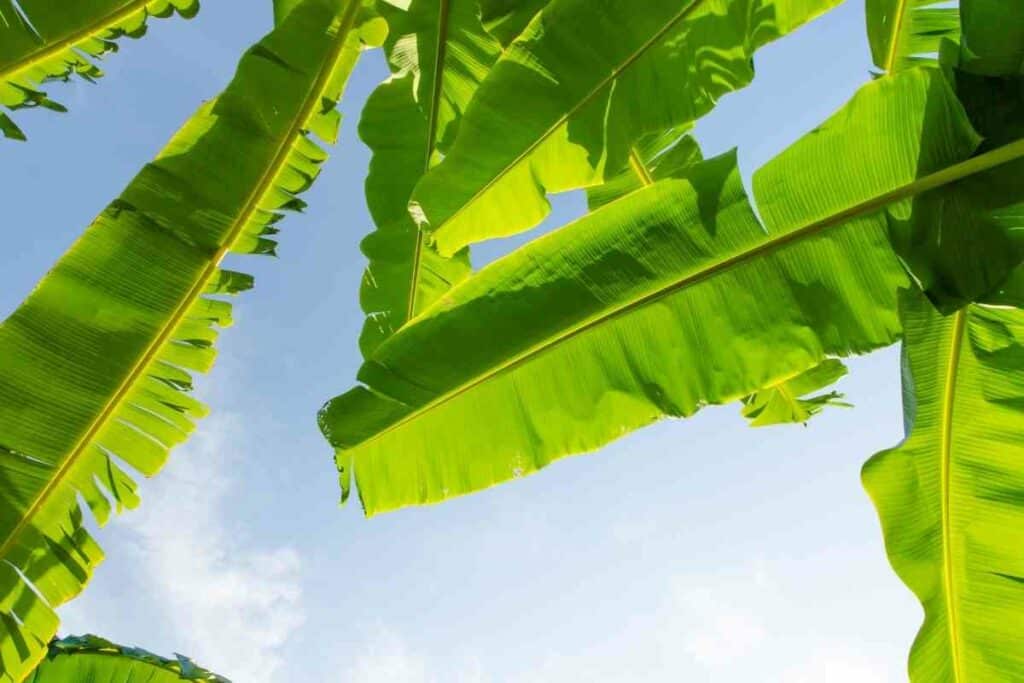
When planted between spring and autumn, the plant flourishes and can grow up to four meters tall.
Other favorable conditions include well-draining soil and a shady spot away from direct sunlight.
Japanese Bananas can grow thick foliage. You must prune the plant so that it doesn’t get unsightly.
Also, ensure that you provide plenty of water to keep the leaves green and healthy.
Generally, the Japanese Banana is a tender plant.
However, some varieties can withstand outdoor conditions, especially if your region experiences mild winters.
3. Bear’s Breeches
Bear’s Breeches have bold and prickly leaves. These unique characteristics make the plant easily noticeable, regardless of placement.
Although you’re likely to get a hybrid at your local grocery store, it isn’t less desirable than the real thing.
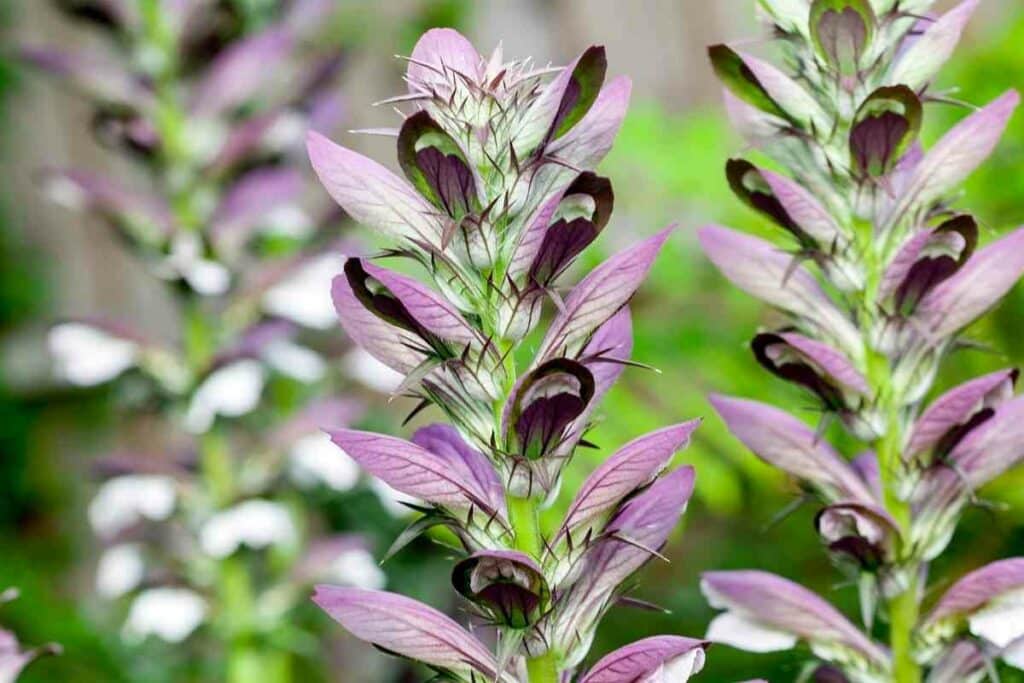
The leather leaves are divided into small thistles, each with spines at its tip.
Bear’s Breeches can grow up to two feet long and 18 inches wide upon maturity.
Ideally, you should grow this plant in well-draining soil.
The plant doesn’t thrive in heavy clay soils that become soggy during winter.
Regarding hardiness, this is the toughest of all in the Acanthus family.
Keep In Mind – It needs a fair amount of sunlight to thrive, but it can also withstand intense solar radiation. As a result, it mainly does well in southern states.
4. Umbrella Plant
The umbrella part grows well under partial shades with moist soil.
Its lily-pad foliage has a 24-inch span, making it a noticeable addition to your yard.
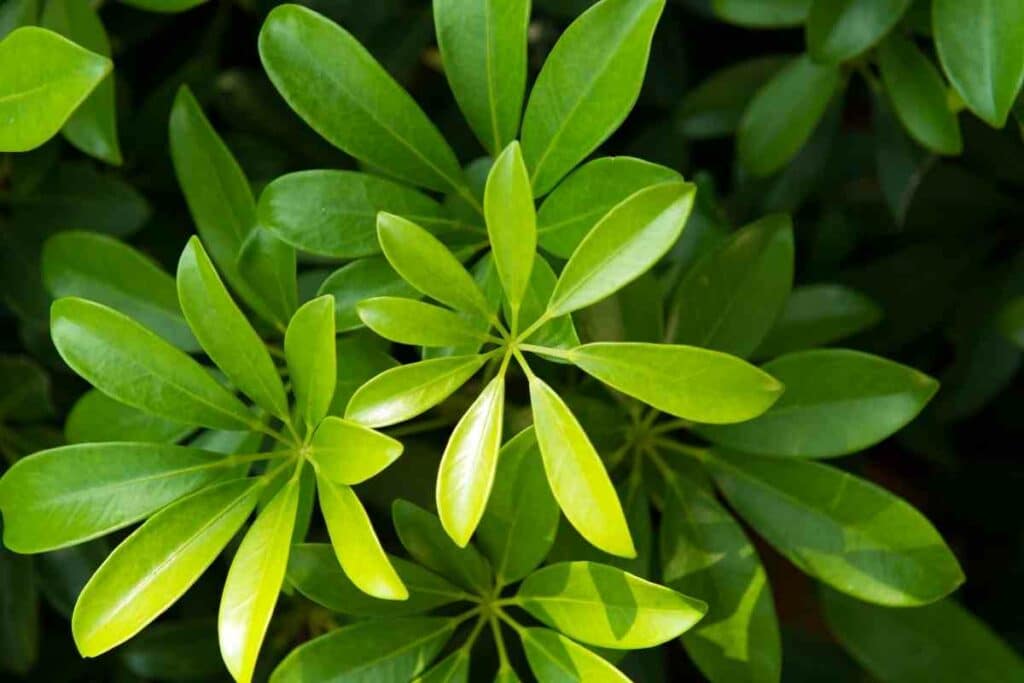
Some call this plant the Indian rhubarb because of its attractive, pink blooms.
The blooming cycle starts in early spring, followed by the emergence of leaves after that.
The plant leaves turn red in autumn, intensifying with more solar radiation. Umbrella plants are spread by rhizomes.
They grow fast in moist soil, making them the perfect solution for boggy spots where most plants won’t grow.
5. Sacred Lotus
Sacred Lotus is a rather peculiar addition to this list, as it’s an aquatic plant.
However, it can also grow in your yard and complement the traditional perennial large-leaved outdoor plants.
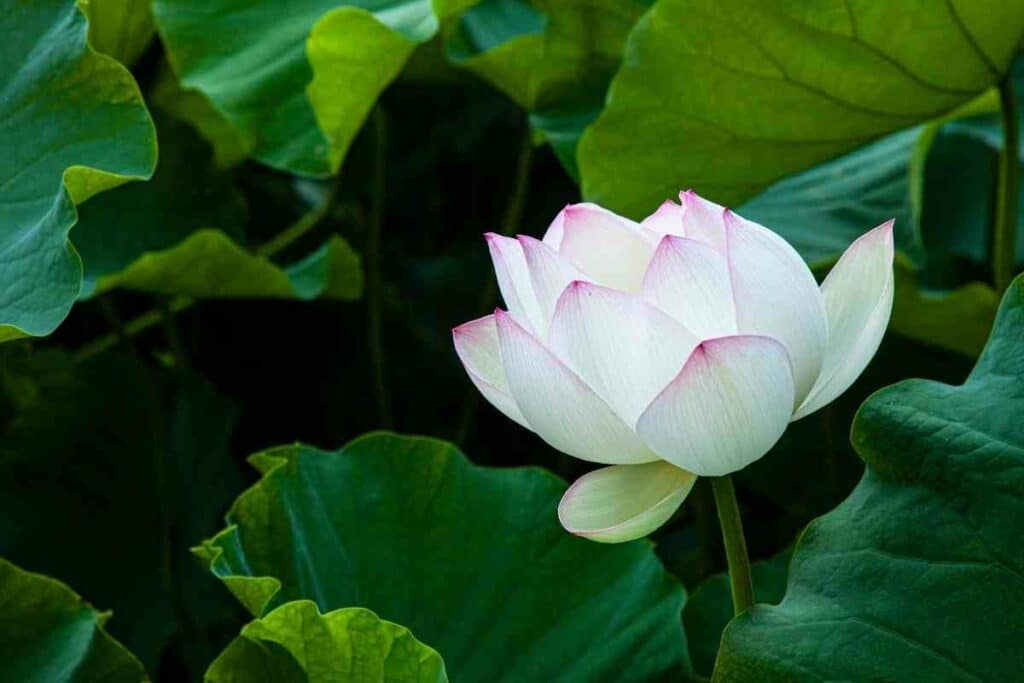
Its unique circular leaves can grow more than two feet wide and evoke an unrivaled exotic flair.
Flowers come in many colors, including pink, rose, and white. Some blooms have more than one color.
These flowers last a week or two before falling off to reveal the budding ornamental seedpod.
Since it’s aquatic, the Sacred Lotus needs water to thrive. Therefore, it works best in a sealed growing container with no holes.
6. Plantain Lily (Hostas)
Plantain lilies are famous for their gorgeous, multi-colored foliage.
The most common varieties have blue, green, and yellow leaves that emerge in summer.
The leaves also vary in size, with the biggest having a 40 cm span.
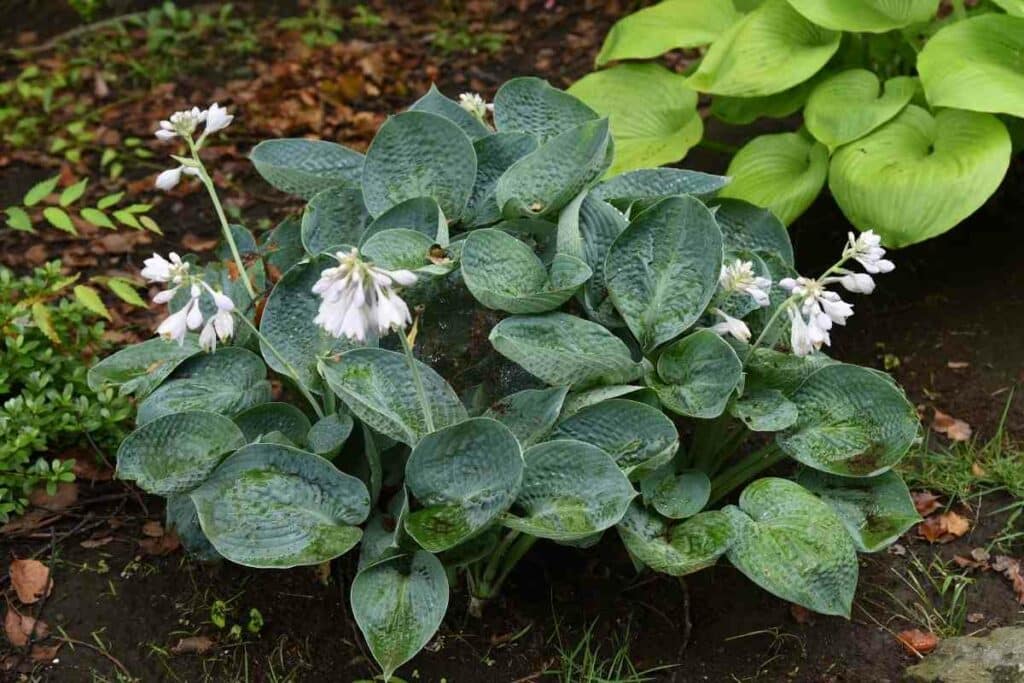
Hostas are easy to grow and can last for many years under proper care.
The plants thrive in moist soil and partial shade away from direct sunlight.
However, you must never leave the soil to dry – add water when it starts forming crumbs.
On the Downside – Plantain lilies are susceptible to slug infestations. Ensure that you enforce strategies to protect your plants against these bugs.
7. Windmill Palm Tree
Windmill palms are slow-growing outdoor plants that flourish in moist soil and with little sunlight.
It’s a relatively hardy species that can grow under irrigation.
The plant can grow up to 30 feet tall if planted in the right location and protected against cold conditions.
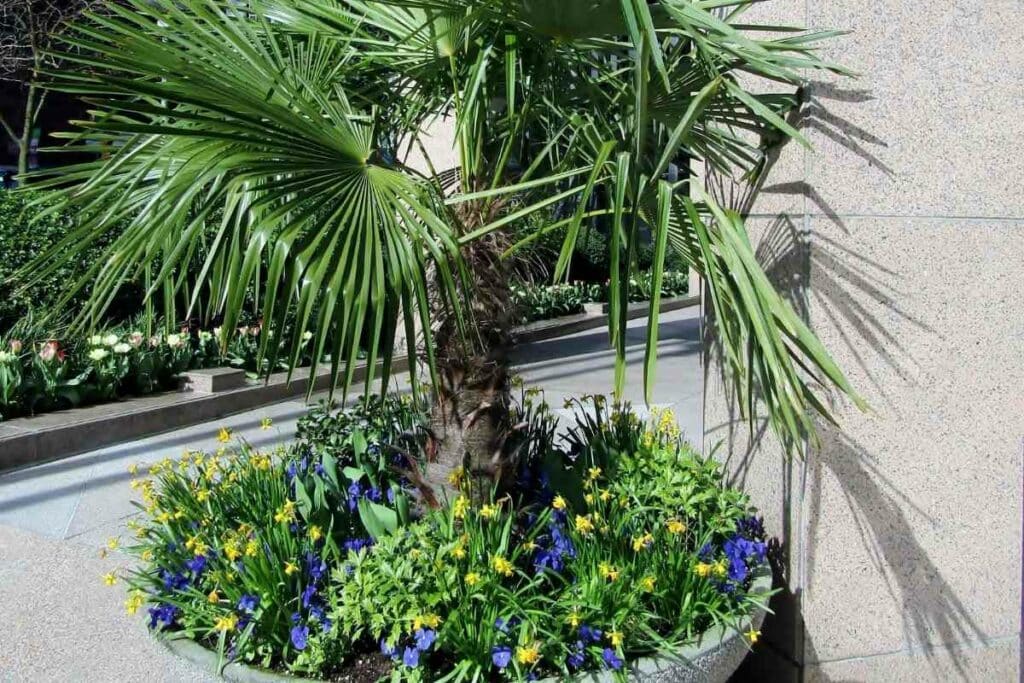
On the other hand, it has fan-shaped leaves with a 3-foot span that gives the plant its name.
The leaf shafts generate black hairy fibers that cover the slender trunk. These fibers help make brooms, brushes, hats, mats, and ropes.
The large light green leaves accentuate the beautiful and compact crown. When dried, these leaves are helpful in thatching roofs.
8. Philodendron
Philodendrons are common household plants that add beauty to indoor and outdoor spaces.
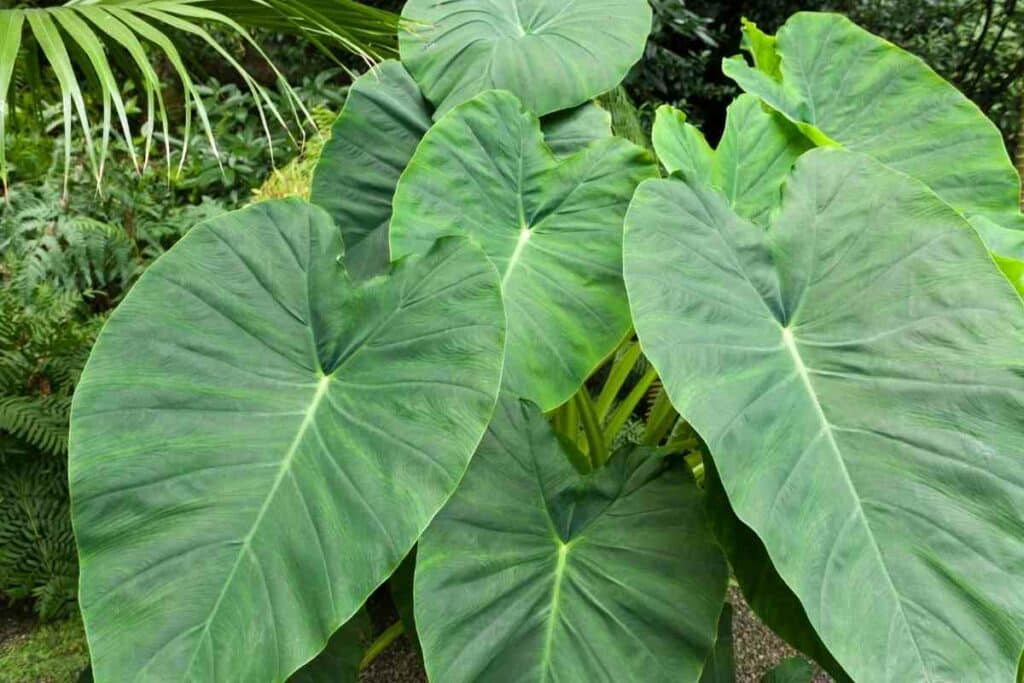
Like the Philodendron bipinnatifidum, some have large lacy leaves, while others have small heart-shaped foliage.
Most plants in this family are climbers that can grow in sunny spots but work best in partial shade.
Ensure that you don’t overwater your plants. Instead, examine the leaves regularly and stop watering if they start turning yellow.
9. Canna
Cannas are a standout addition to any outdoor space.
Their variegated leaves and vibrant colored flowers add an exotic feel to your backyard.
The Phasion is undoubtedly the most attractive species in the family, as it has orange flowers and striped leaves with a tinge of green, orange, pink, and purple.
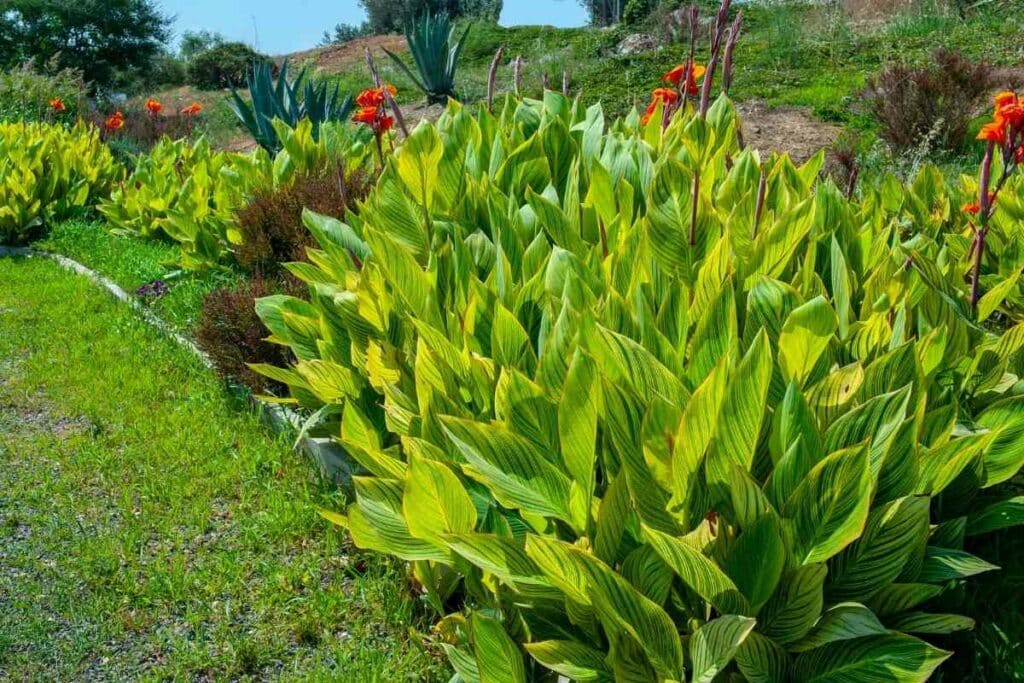
A mature Canna plant ranges between six and eight feet tall. Their leaves, which resemble paddles, can grow up to three feet wide.
Depending on the cultivar, they can be reddish-purple or burgundy.
Cannas bloom in summer, producing oval, tightly-wrapped flowers with pointed petals.
The flowers emerge on tall spikes, with buds opening after the end of the blooming cycle.
Despite sharing the same appearance as tropical plants, Cannas aren’t as hardy. So when it gets cold outside, ensure that you move them indoors.
10. Cup Plant
The Cup Plant is the most popular variant in the Silphium species, called rosinweed.
Its soaring height and large leaves are great at breaking the monotony of small-leaved perennial plants.
Because it originates from the prairies, the cup plant is the perfect complement to decorative grasses.
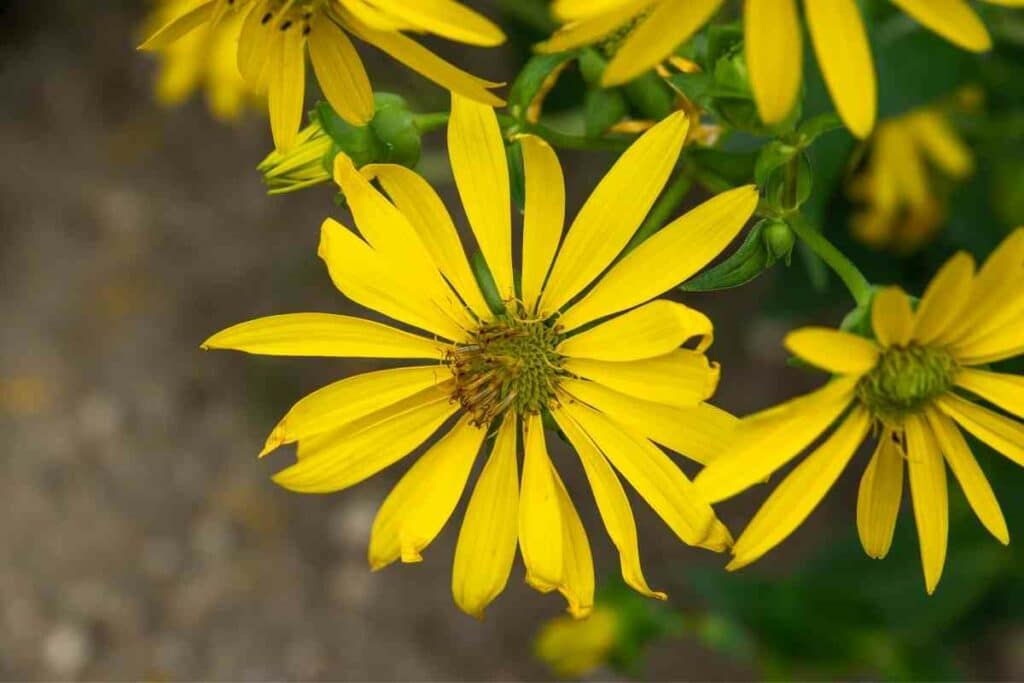
Its leaves, which can span more than a foot wide, grow opposite each other and clasp the stem to form a cup.
This cup holds rainwater, creating a home for beneficial insects and grassland birds.
The Cup Plant blooms towards the end of summer, producing vibrant yellow flowers that look like daisies.
In Fall – The blooms mature into seeds that attract lots of finches.
11. Cardoon
Cardoon is a decorative outdoor plant that bears a remarkable resemblance to artichoke.
Its basal foliage is present throughout the year in mild climates, producing silvery green leaves with a spotless white lower surface.
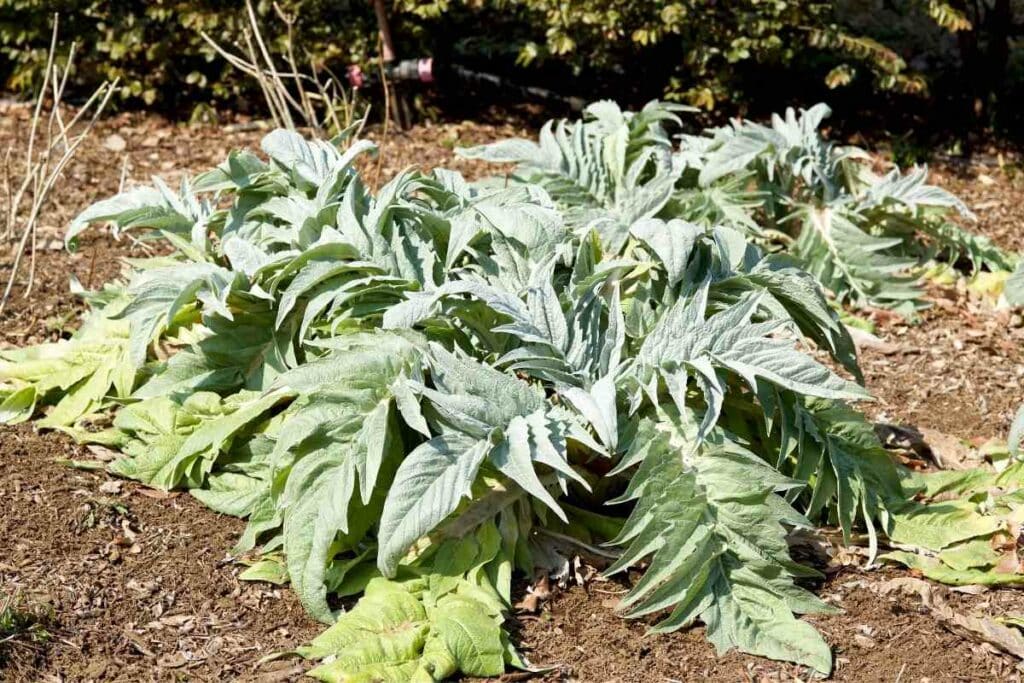
Each leaf can grow up to three feet long, with a 5-foot span if grown under optimal conditions.
Cardoons thrive in nutrient-rich, well-draining soils. When it’s dry, you must water the plant to keep it alive.
The plant produces large spiny buds at the onset of summer, which later lead to prickly violet blooms.
After Flowering – It helps to prune the spikes to force the ant to flush new basal foliage.
This ensures that it maintains its visual appeal until the next blooming cycle.
12. Swiss Cheese Plant
The Swiss Cheese Plant is renowned for its uniqueness.
Its leaves have small circular holes that make them look like Swiss Cheese.
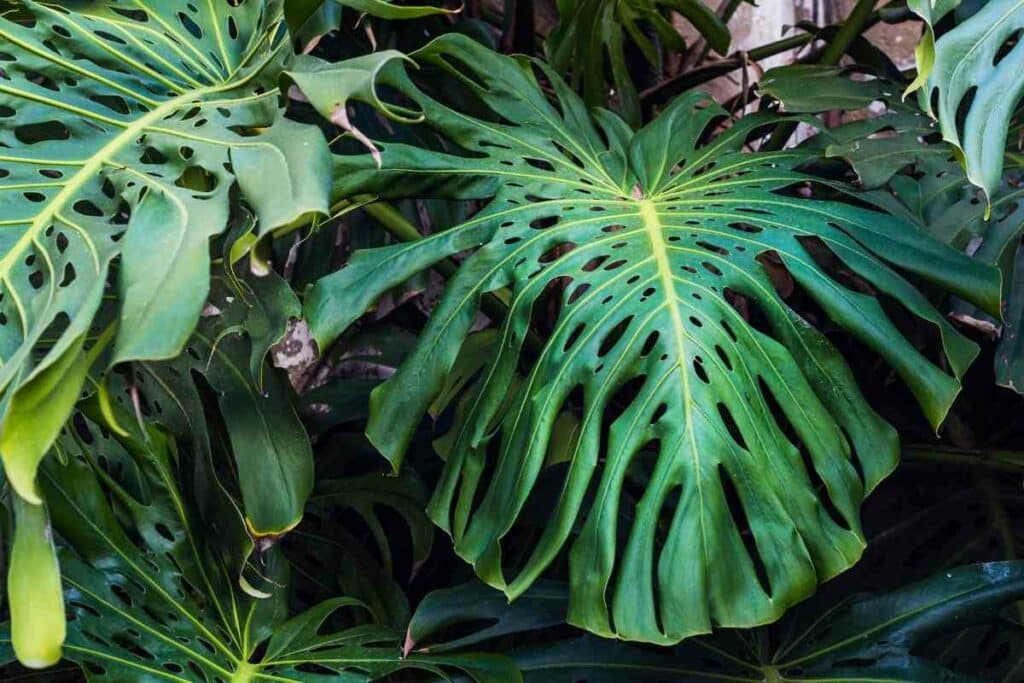
It’s not a coincidence that this plant is a common appearance in interior décor magazines and websites.
Its striking green color accentuates a bright color palette, and it also requires little maintenance.
Swiss Cheese Plant leaves have a three-foot span. The plant flourishes in rich, well-draining soil.
Because they’re climbers, you need to add staking material or grow them next to your fence.
13. Elephant Ear Plant
Like elephants, the largest mammals on earth, the Elephant Ear Plant has enormous leaves.
The colossal, heart-shaped, deep-green foliage is a great addition to your backyard.
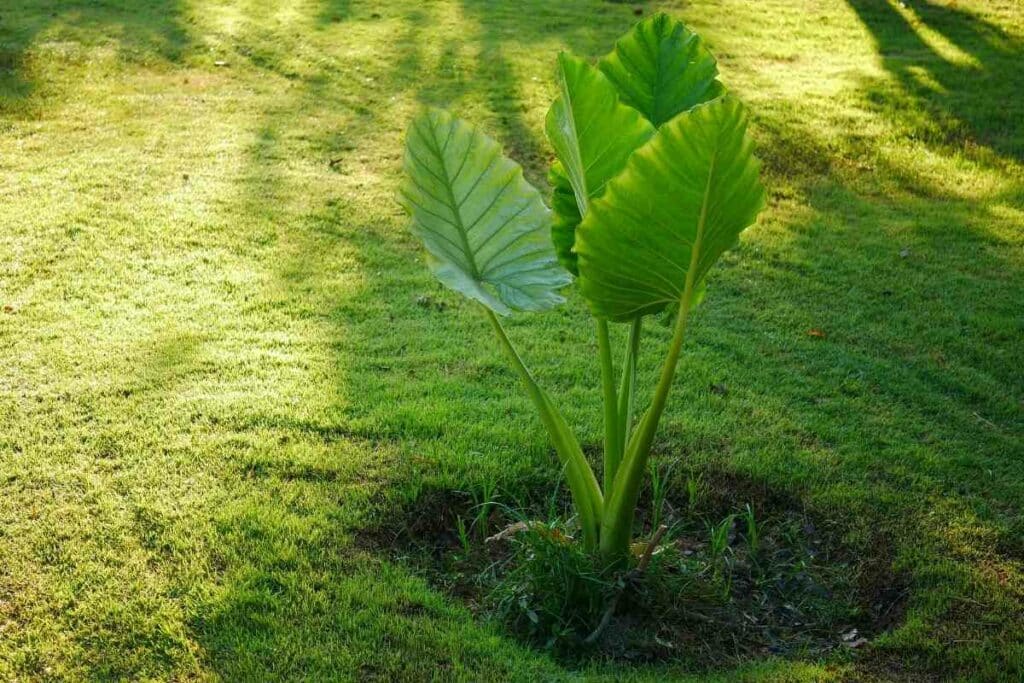
First, this plant is an excellent ground cover that thrives in areas where most outdoor plants won’t grow. It’s also helpful, like edging plants surrounding your deck and patio.
Elephant Ear plants are easy to grow and require minimal attention once they become established.
Ensure that the soil is moist and the sunlight is indirect. Please avoid planting in winter because these plants are vulnerable to frost.
In Dry Conditions – You’ll need to water the plants regularly. You might also want to use fertilizer.
Elephant ear plants can’t withstand sub-zero temperatures.
So if you live in an area that experiences harsh winters, the best thing is to move the plant indoors.
14. Rubber Fig
Rubber Figs are impressively hardy for a plant their size.
The plants grow well under indirect sunlight and can survive with two watering sessions weekly.
However, the best thing about rubber Figs is that you can control their size.
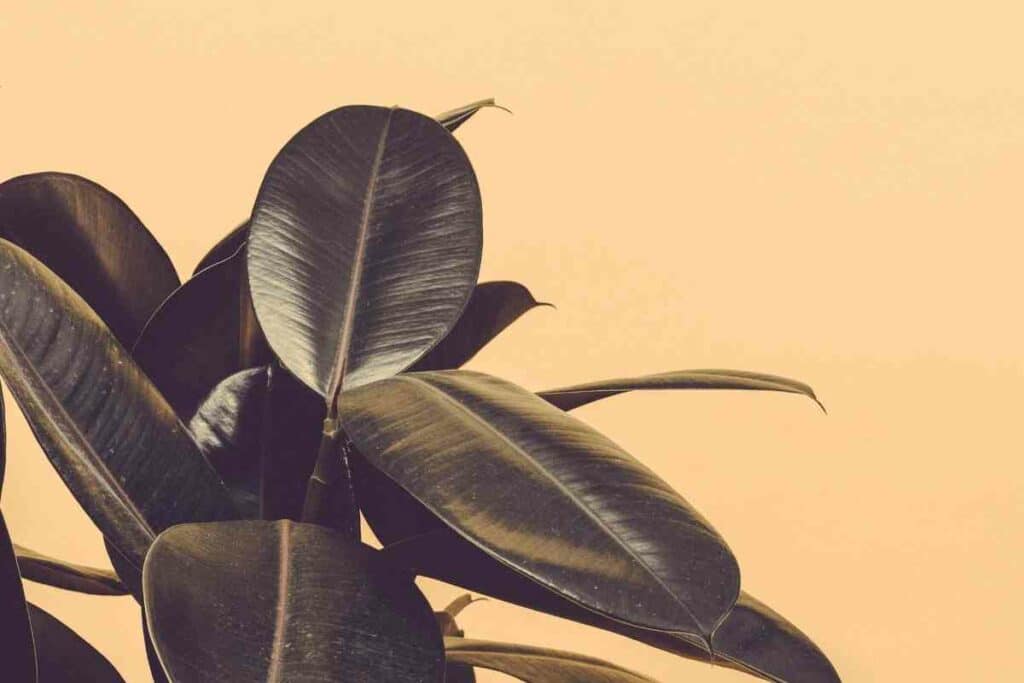
You can grow them as large as possible if you have adequate space. If you want to maintain their growth, plant them in a container.
Regardless of your preferred growing method, rubber figs require moist soil. Therefore, ensure that you apply mulch to improve moisture retention.
15. Sweet Coltsfoot
Another plant with imposing leaves is the Sweet Coltsfoot, also known as Butterbur.
Although native to Japan, this outdoor plant is common in China and Korea.
This plant produces magnificent crowned-cluster flowers in spring shortly before its attractive foliage appears.
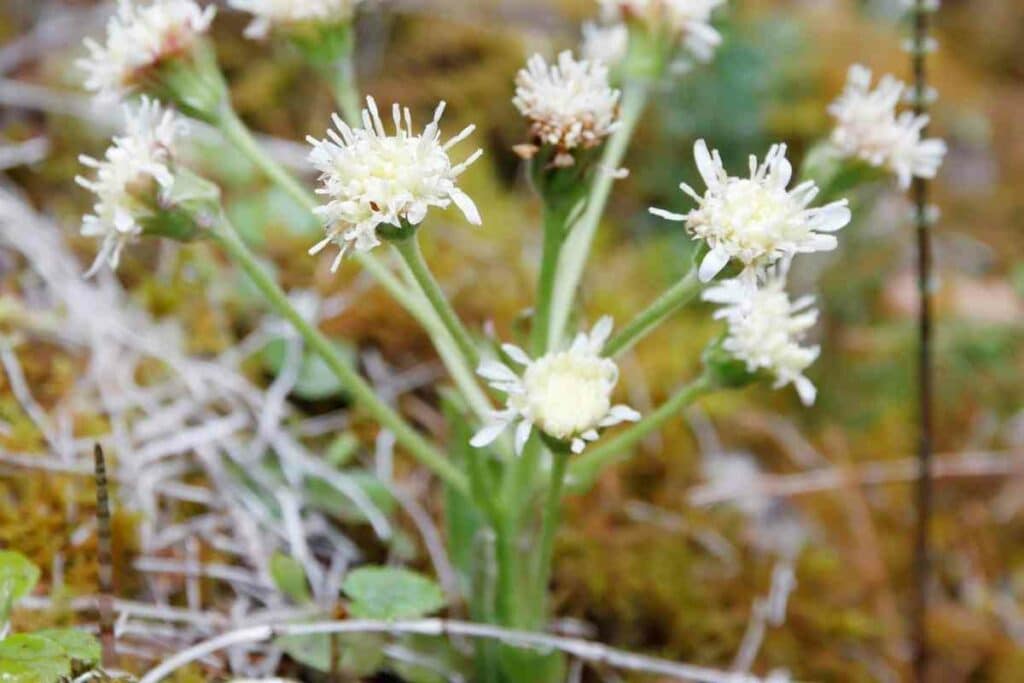
Sweet Coltsfoot thrives under partial shades with moist soil, especially near ponds and swampy areas.
The plant wilts under direct sunlight unless you water it frequently. However, under the right conditions, its rhizomes grow aggressively.
In Japan – The leaf stalks make a local delicacy called Fuki. However, it would be best if you first soaked the stalks and salt to remove the unpleasant odor.
It’s also worth noting that improperly prepared Fuki can cause liver damage.
What’s the Best Way to Grow Large-leaved Plants?
The size of your garden doesn’t restrict you to the type of plants you grow.
Large-leaved perennials can work anywhere, regardless of size.
Here are the best ways to grow these plants.
A Focal Point
A large-leaved plant draws attention.
Its stark contrast from the usual outdoor plants makes it the focal point in your backyard. Essentially, it demands to be seen.
Even in small gardens, a large-leaved plant can accentuate décor and become the center of attraction.
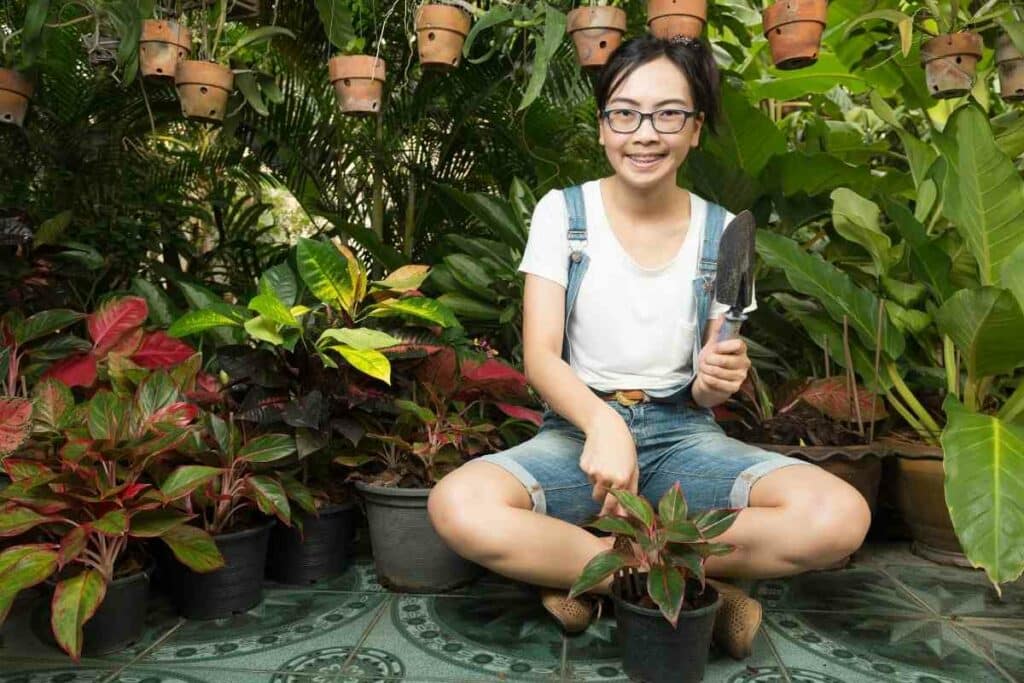
Plant En Masse for Impact
If you have a spacious backyard, large-leaved plants are a great way of making a statement.
Placing outdoor plants en masse greatly impacts and gives a powerful presence to your outdoor space.
For instance, the Umbrella Plant helps add a vegetative cover to an otherwise empty spot, while bananas add beauty and provide food.
Wrapping Up
Large-leaved plants are an impactful addition to any outdoor space.
If you get the placement right, their contrast from small-leaved plants creates a sight.
Additionally, these plants are perfect for creating an exotic, tropical feel.
Most of them are hardy and can withstand mild winters without special treatment. However, it would help if you watered them in summer.
Lastly, large-leaved plants are versatile. They work well for small and large backyards.
They allow you to play with scale and spark aesthetic interest in limited spaces. Contrarily, they help cover unused areas in spacious yards.
